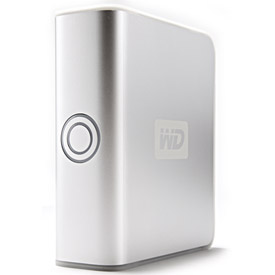Recovering Data from NAS Devices

Network Attached Storage (NAS) devices are quickly gaining popularity. Plugging into a free Ethernet port on your router, switch or PC, these devices provide a quick and convenient way to increase storage space available to a single PC or the entire network without the need of a computer to share the attached storage. Some NAS devices have data capacity of one terabyte or more.
Having your storage capacity increased to over a terabyte is great, but losing a terabyte of data due to a power outage, a system failure or a virus attack would be just terrible. Marketing a full range of data recovery products, we at DiskInternals Company get numerous questions from users of these devices about restoring their lost data.
Answering this question is not an easy matter of recommending one or another product developed by our company. While NAS devices often look similar or even exactly like USB disk enclosures, they don’t function in a similar manner. NAS devices are much more complex than regular USB drive enclosures. Often featuring internal RAID arrays to achieve the huge advertised capacities, these devices are more difficult to recover data from should anything happen to them.
Let’s have a look at a higher-end version of WD MyBook. Featuring storage capacity of 1 TB, this device has a software RAID array controlled by Linux OS that runs inside of the box. Apparently, using any data recovery program through Ethernet connection wouldn’t return any meaningful result should anything happen to the enclosure, its operating system, or system structures of the hard disks making the array.
In order to recover data from WD MyBook and other NAS devices, you have to follow several steps that involve disassembling the device and your PC, and connecting all hard drives from the NAS device directly to IDE or SATA ports inside your computer.
Repairing Data from NAS Devices: a Step-by-Step Tutorial
- Disassemble your NAS device (e.g. WD MyBook)
- Remove internals hard drive(s) from the NAS box
- Insert all of the hard drives into your PC, and connect them to available IDE or SATA ports
- Run DiskInternals Uneraser, Partition Recovery or RAID Recovery
- Perform the recovery by following prompts of the Easy Recovery Wizard
Choosing the Right Product
DiskInternals offers three different products that can recover data from NAS devices as well as repair the disks.
- DiskInternals Uneraser is the least expensive option. Use Uneraser to just recover files and data from the disk(s) you tool from the NAS device. Note that Uneraser will not repair the damaged system structures such as the file system and boot partition tables.
- DiskInternals Partition Recovery can do everything that Uneraser can do, as well as repair the system structures of the damaged disk(s). Note that while Partition Recovery can recover data from single disks and RAID arrays, it cannot fix system structures of a RAID.
- DiskInternals RAID Recovery is the most expensive and most advanced product manufactured by DiskInternals. RAID Recovery can recover files and data from single disks and RAID arrays, fix system structures of single disks and RAID arrays. RAID Recovery detects the exact type and configuration of a RAID completely automatically, which is important as there are numerous different NAT systems available.
DiskInternals data recovery products, including Uneraser, Partition Recovery and RAID Recovery, fully support the Linux file system as well as all types of Linux RAID, including Linux RAID 0, 1, 4, 5, and 6. Links:
Download evaluation version for absolutely free.